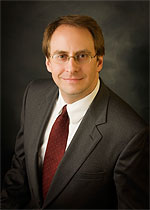Historian: Audie Murphy, Movie Star and WWII’s Most Decorated Hero, Suffered from PTSD

David A. Smith, Ph.D., senior lecturer of history in Baylor University's College of Arts & Sciences
Media contact: Eric M. Eckert, office: (254) 710-1964, mobile: (254) 652-0398
Follow Eric on Twitter: @EricBaylorU
Follow Baylor Media Communications on Twitter: @BaylorUMedia
June is National Post-traumatic Stress Disorder Awareness Month
WACO, Texas (June 3, 2015) – The isolation that combat veterans often feel exists between themselves and civilians hit Audie Murphy — movie star and World War II's most decorated hero — full force on V-E Day, the day World War II ended in Europe.
David A. Smith, Ph.D., senior lecturer of history in Baylor University's College of Arts & Sciences, who has written a new biography about the hero, said Murphy displayed post-traumatic stress disorder (PTSD) long before it was understood.
According to the National Center for PTSD, which sought U.S. Senate approval for June to be named National PTSD Awareness Month, approximately 7 percent of Americans will experience PTSD at some point in their lives. Nearly 5.2 million U.S. adults – including soldiers, veterans, victims of abuse and others – are reported as having PTSD during a given year.
Smith said Murphy, who was in Cannes, France, during V-E Day, could hear people celebrating in the streets below his hotel. The soldier took a hot bath, put on his tie and went out to watch the jubilation.
"In the streets, crowded with merrymakers, I feel only a vague irritation," Murphy wrote later. "I want company, and I want to be alone. I want to talk, and I want to be silent. I want to sit, and I want to walk. There is V-E Day without, but no peace within."
Smith said that response "reveals that Murphy was already suffering from PTSD, which we understand much more about now."
Smith wrote in his book, The Price of Valor: The Life of Audie Murphy, America's Most Decorated Hero of World War II, that Murphy embodied Norman Rockwell's America and "became the poster child for timeless American virtues of innocence, humility, honesty and steely courage."
But beneath that exterior, Smith said, Murphy was devastated, suffering from what was known during World War II as "battle fatigue" and in the war before that as "shell shock," Smith said.
"It was a condition which at the time was little understood, and for the treatment of which there was almost no help available. It plagued him the rest of his life," Smith said.
David A. Smith is a senior lecturer in American history at Baylor University, specializing in cultural and military history. In addition to a weekly column on art, culture and history for the Waco Tribune-Herald, his writings have appeared in The Wall Street Journal, Weekly Standard, Foxnews.com, Townhall.com, The Dallas Morning News, Houston Chronicle, Naval War College Review and other outlets. He also is the author of Money for Art: The Tangled Web of Art and Politics in American Democracy. He is a frequent guest on radio shows and lecturer to arts and civic organizations.
by Terry Goodrich, assistant director of Baylor Media Communications, (254) 710-3321
ABOUT BAYLOR UNIVERSITY
Baylor University is a private Christian University and a nationally ranked research institution, characterized as having "high research activity" by the Carnegie Foundation for the Advancement of Teaching. The University provides a vibrant campus community for approximately 16,000 students by blending interdisciplinary research with an international reputation for educational excellence and a faculty commitment to teaching and scholarship. Chartered in 1845 by the Republic of Texas through the efforts of Baptist pioneers, Baylor is the oldest continually operating University in Texas. Located in Waco, Baylor welcomes students from all 50 states and more than 80 countries to study a broad range of degrees among its 12 nationally recognized academic divisions. Baylor sponsors 19 varsity athletic teams and is a founding member of the Big 12 Conference.
ABOUT BAYLOR COLLEGE OF ARTS & SCIENCES
The College of Arts & Sciences is Baylor University's oldest and largest academic division, consisting of 24 academic departments and 13 academic centers and institutes. The more than 5,000 courses taught in the College span topics from art and theatre to religion, philosophy, sociology and the natural sciences. Faculty conduct research around the world, and research on the undergraduate and graduate level is prevalent throughout all disciplines. Visit www.baylor.edu/artsandsciences.